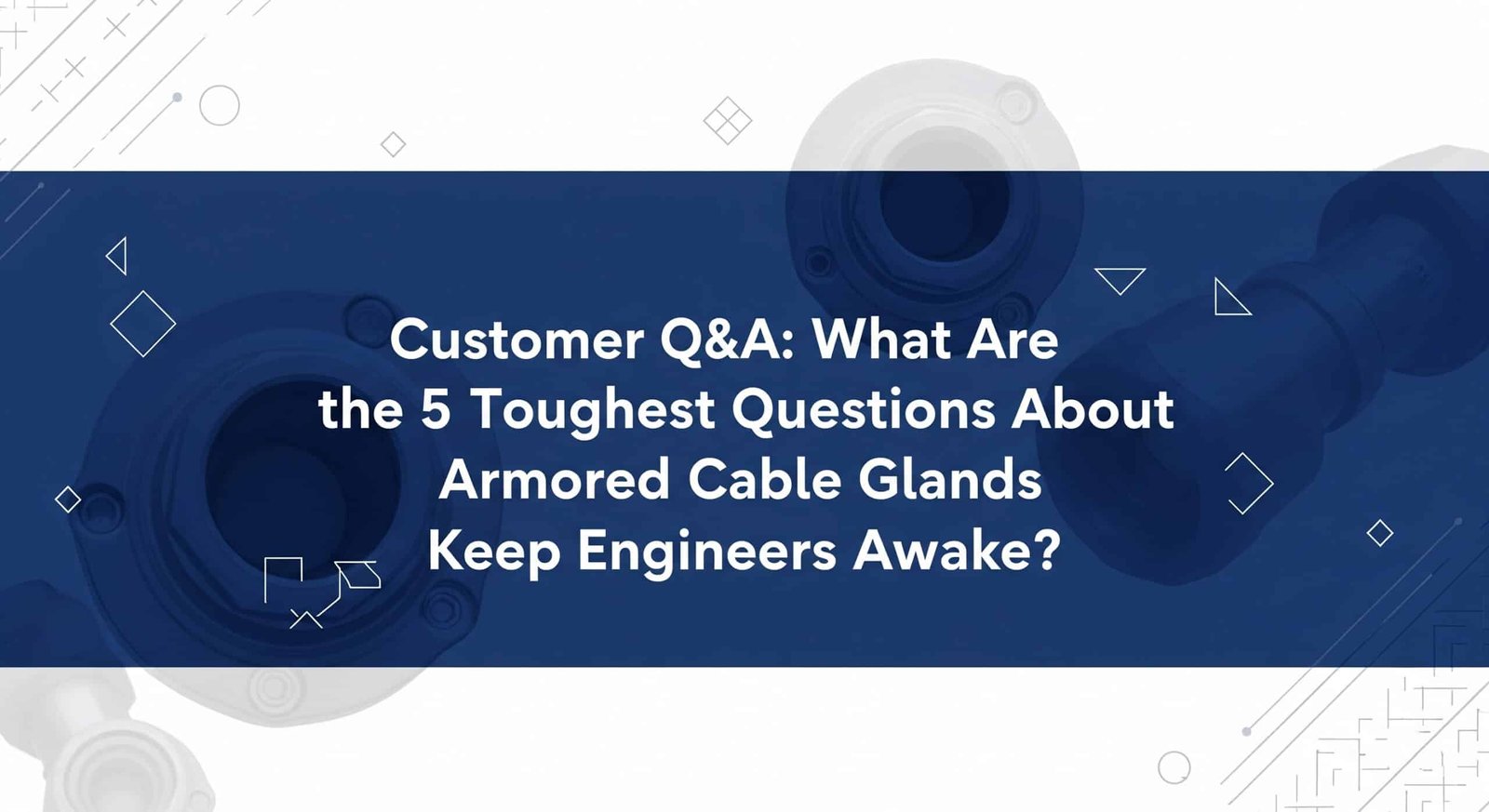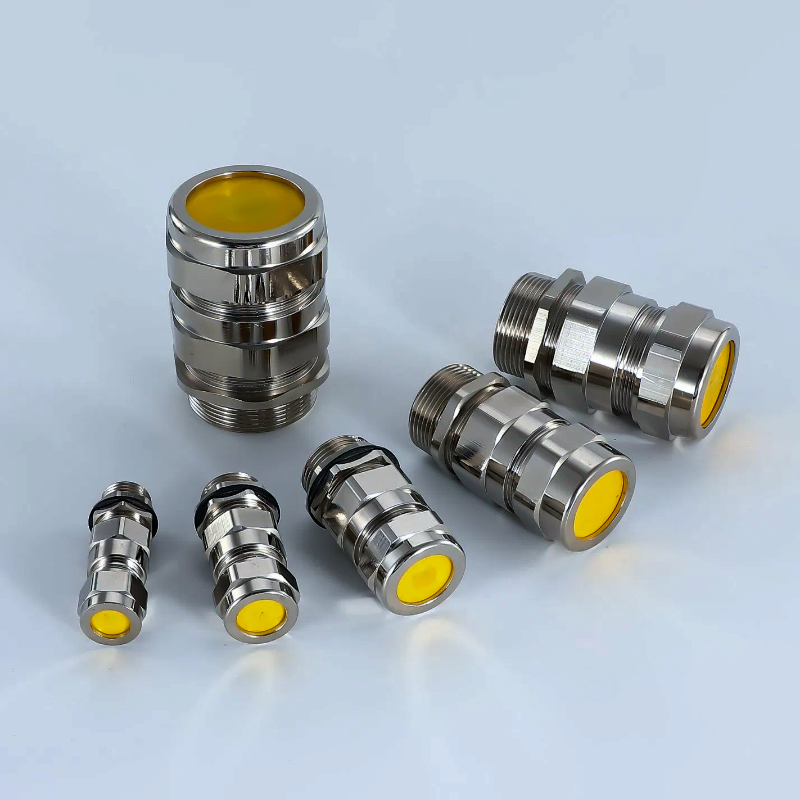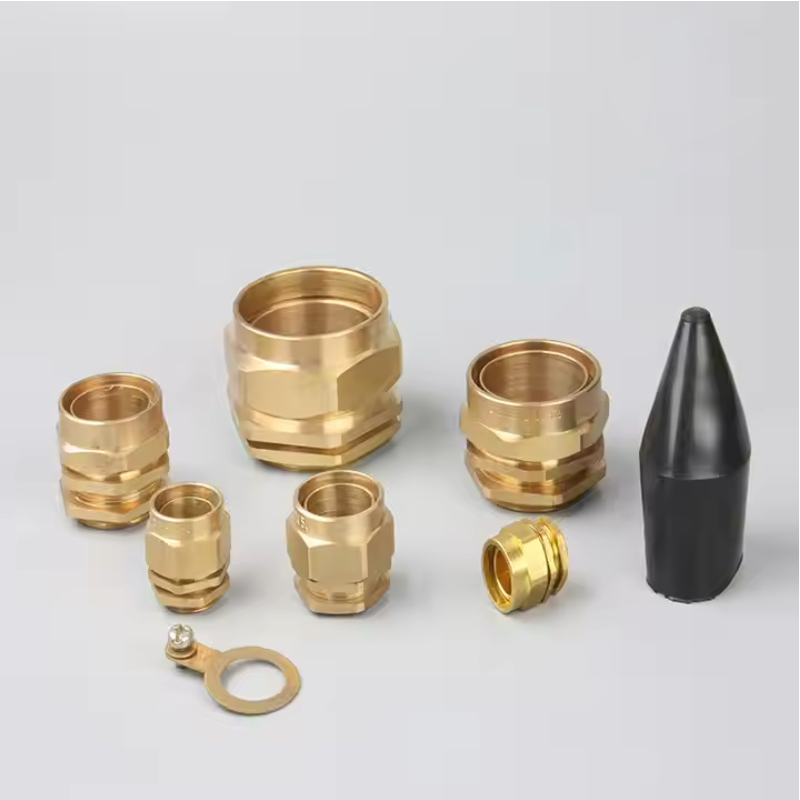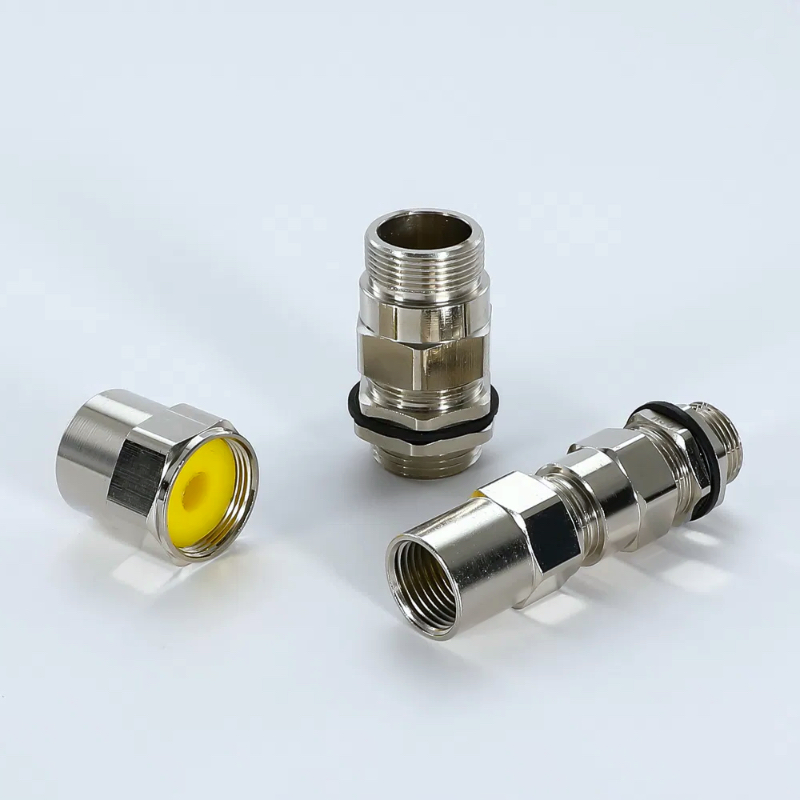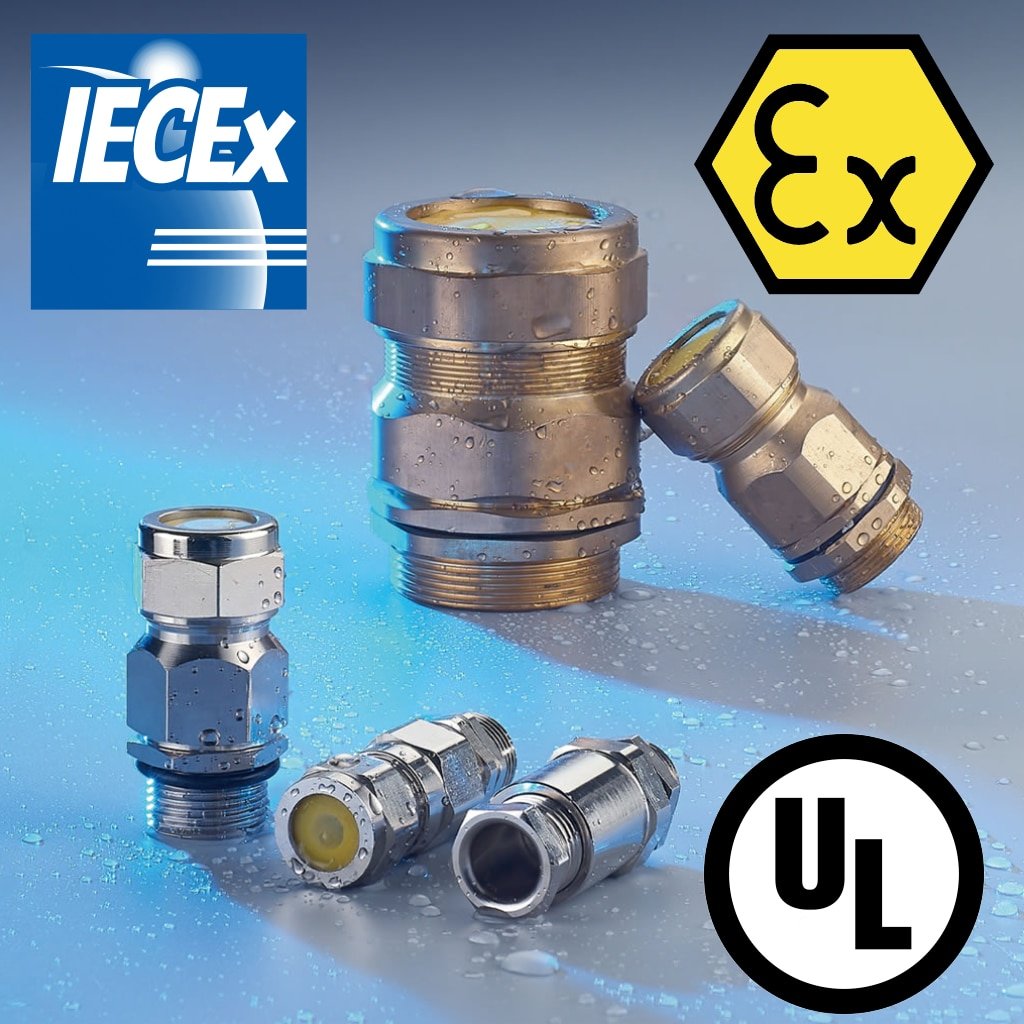Armored cable installations fail when engineers can’t get straight answers to critical technical questions. Wrong choices lead to safety hazards and costly rework.
These 5 frequently asked armored cable gland questions cover earthing methods, size selection, installation torque, sealing performance, and certification requirements – answering them correctly prevents 90% of field failures.
Yesterday, David called me at 2 AM (his time) from a power plant in Germany. His team was stuck on an armored cable installation, and production couldn’t start until they got it right.
Table of Contents
- How Do I Properly Earth the Cable Armor Without Creating Ground Loops?
- Which Gland Size Do I Need for SWA Cables with Irregular Armor Profiles?
- What Torque Settings Prevent Armor Damage During Installation?
- Can Armored Cable Glands Maintain IP Rating with Damaged Cable Sheaths?
- Do I Need Special Certifications for Armored Glands in Hazardous Areas?
How Do I Properly Earth the Cable Armor Without Creating Ground Loops?
This question stumps even experienced engineers and causes 40% of armored cable installation problems.
Connect armor earthing through the cable gland body to the equipment chassis at one end only, using proper earthing washers and avoiding parallel earth paths that create dangerous ground loops1.
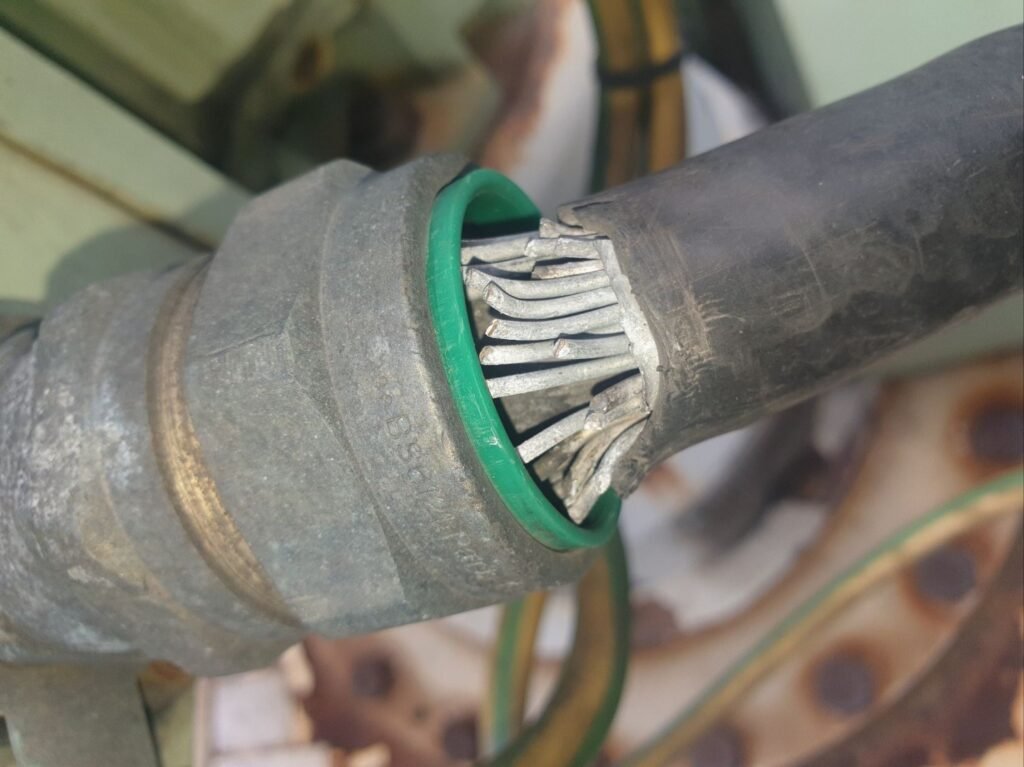
The Ground Loop Nightmare
Last month, Hassan’s petrochemical plant experienced mysterious equipment failures. The culprit? Improper armor earthing creating 50-amp ground currents that fried sensitive electronics.
Common Earthing Mistakes:
- Both-end earthing: Creates ground loops and circulating currents
- No earthing washer: Poor electrical contact increases resistance
- Wrong gland material: Brass glands can’t provide reliable earthing
- Missing continuity: Painted surfaces block earth path
The Bepto Earthing Solution
Our armored cable glands feature integrated earthing systems:
Design Features:
- Stainless steel construction: Excellent conductivity and corrosion resistance
- Serrated earthing washers: Cut through paint for reliable contact
- Spring-loaded contacts: Maintain pressure under vibration
- Low-resistance path: <0.1 ohm from armor to gland body
Proper Installation Sequence:
- Strip cable armor to correct length (25-30mm)
- Install earthing washer against equipment surface
- Tighten gland body to specified torque
- Verify continuity with multimeter (<1 ohm)
- Apply thread locker to prevent loosening
Real-World Earthing Guidelines
| Application | Earthing Method | Key Considerations |
|---|---|---|
| Motor drives | Single-point at drive end | Prevents bearing currents2 |
| Control panels | Equipment chassis only | Avoids noise in control circuits |
| Hazardous areas | Intrinsically safe barriers | Maintains safety integrity |
| Outdoor installations | Lightning protection integration | Surge protection coordination |
“Your earthing system eliminated our ground loop problems completely,” David told me after the installation. “No more mysterious equipment failures.”
Which Gland Size Do I Need for SWA Cables with Irregular Armor Profiles?
Cable manufacturers’ tolerances create sizing nightmares that lead to expensive field modifications.
Measure the cable’s maximum outer diameter including armor irregularities, then select a gland with sealing range 2-3mm larger than your measurement to accommodate manufacturing tolerances.
The SWA Cable Sizing Challenge
Steel Wire Armored (SWA) cables3 aren’t perfectly round. The wire wrapping creates an irregular profile that varies by manufacturer and cable size.
Typical Variations I’ve Measured:
- 4-core 25mm²: 18.5-21.2mm outer diameter
- 3-core 70mm²: 24.8-27.1mm outer diameter
- Single core 185mm²: 32.1-35.4mm outer diameter
Our Gland Sizing System
Step 1: Accurate Measurement
- Use calipers at multiple points along cable
- Measure including any protective tape
- Account for cable bend radius effects
- Document maximum dimension found
Step 2: Gland Selection Matrix
| Cable OD Range | Recommended Gland Size | Sealing Range | Safety Margin |
|---|---|---|---|
| 15-18mm | M20 | 10-18mm | 2mm |
| 18-22mm | M25 | 13-22mm | 3mm |
| 22-28mm | M32 | 18-28mm | 4mm |
| 28-35mm | M40 | 22-35mm | 5mm |
Step 3: Verification Process
- Test fit with actual cable sample
- Check sealing compression range
- Verify armor clamping effectiveness
- Confirm thread engagement length
Hassan’s Sizing Success Story
Hassan’s team was struggling with 50mm² SWA cables that measured anywhere from 26.8mm to 29.2mm. Standard M32 glands (22-28mm range) were too small for the largest cables.
Our Solution:
- Recommended M40 glands (22-35mm range)
- Provided sizing verification kit
- Included installation torque specifications
- Delivered technical support during installation
Result: Perfect fit for all cable variations, zero field modifications required 😉
What Torque Settings Prevent Armor Damage During Installation?
Over-tightening destroys cable armor, while under-tightening allows water ingress and poor earthing.
Apply 40-60 Nm torque for M32 armored glands, using a calibrated torque wrench4 and stopping immediately when the specified value is reached to prevent armor wire breakage.
The Goldilocks Zone of Torque
Too little torque = water ingress and poor earthing
Too much torque = broken armor wires and damaged cables
Just right = reliable sealing and armor integrity
Torque Specifications by Gland Size:
| Gland Size | Torque Range | Typical Application |
|---|---|---|
| M20 | 25-35 Nm | Small control cables |
| M25 | 30-45 Nm | Medium power cables |
| M32 | 40-60 Nm | Standard SWA cables |
| M40 | 50-75 Nm | Large power cables |
| M50 | 60-90 Nm | Heavy-duty applications |
Installation Best Practices
Essential Tools:
- Calibrated torque wrench (±4% accuracy)
- Proper socket size (avoid adjustable wrenches)
- Thread cleaning brush
- Marine-grade thread sealant
Step-by-Step Process:
- Prepare threads: Clean and apply sealant
- Hand tighten: Until gland body contacts surface
- Mark position: Note starting point with marker
- Apply torque: Gradually increase to specification
- Verify sealing: Check for proper compression
- Document: Record torque values for maintenance
David’s Torque Disaster (And Recovery)
David’s maintenance team was using impact guns to install armored glands. Result: 30% of armor wires broken, multiple water ingress failures, and $150K in cable replacements.
Our Training Program Included:
- Proper torque wrench calibration procedures
- Hands-on installation practice
- Armor damage recognition training
- Quality control checklists
“Your torque training saved us from repeating that expensive mistake,” David admitted. “Now we get perfect installations every time.”
Can Armored Cable Glands Maintain IP Rating with Damaged Cable Sheaths?
Minor sheath damage during installation often leads to expensive cable replacement or compromised sealing.
Quality armored cable glands with dual-seal design can maintain IP68 rating even with minor outer sheath damage, using inner cable sealing and armor compression to prevent water ingress.
Understanding Sheath Damage Types
Acceptable Damage (Repairable):
- Surface scratches <1mm deep
- Minor cuts not penetrating armor
- Localized abrasion from handling
- Small nicks from cable pulling
Unacceptable Damage (Replace Cable):
- Cuts through armor wires
- Damage exposing inner conductors
- Crushed or deformed sections
- Chemical contamination of insulation
Our Dual-Seal Technology
Primary Sealing System:
- Compression seal on outer sheath
- Accommodates minor surface irregularities
- Maintains pressure under thermal cycling
- Self-adjusting design compensates for wear
Secondary Sealing System:
- Individual conductor sealing
- Armor wire compression chamber
- Redundant O-ring barriers
- Breathable membrane option available
Damage Assessment Protocol
Field Inspection Checklist:
- Measure damage depth with calipers
- Check armor wire integrity
- Verify conductor insulation condition
- Test insulation resistance (>1000 MΩ)
- Document damage with photos
Repair Decision Matrix:
| Damage Type | Depth | Action Required |
|---|---|---|
| Surface scratch | <0.5mm | Proceed with installation |
| Minor cut | 0.5-1.0mm | Use repair tape + gland |
| Deep cut | >1.0mm | Replace cable section |
| Armor damage | Any | Replace cable |
Hassan recently had a cable with 0.8mm sheath damage from a sharp cable tray edge. Instead of replacing the entire 200-meter run, our dual-seal glands provided reliable IP68 protection, saving $25K in materials and labor.
Do I Need Special Certifications for Armored Glands in Hazardous Areas?
Mixing standard and explosion-proof requirements creates dangerous compliance gaps.
Armored cable glands in hazardous areas require both ATEX5/IECEx explosion-proof certification AND proper armor earthing certification to meet safety standards and prevent static electricity buildup.
The Certification Maze
Hazardous area armored glands must satisfy multiple standards simultaneously:
Explosion Protection Standards:
- ATEX: European Directive 2014/34/EU
- IECEx: International standard IEC 60079
- UL: North American safety standards
- CSA: Canadian safety certification
Armor-Specific Requirements:
- Earthing continuity: <0.1 ohm resistance
- Static dissipation: Prevents charge buildup
- Mechanical integrity: Armor clamping strength
- Environmental sealing: IP66/IP68 rating
Our Hazardous Area Portfolio
Available Certifications:
- ATEX Ex d IIC T6 (Zone 1 flameproof)
- ATEX Ex e II T6 (Zone 2 increased safety)
- IECEx Ex d IIC T6 (International)
- UL Class I Div 1 & 2 (North America)
Key Features:
- Integrated armor earthing system
- Flame path machining to ±0.05mm
- Temperature-rated materials
- Comprehensive test certificates
Compliance Documentation Package
What We Provide:
- ATEX/IECEx certificates: Original certification documents
- Installation instructions: Hazardous area specific procedures
- Material certificates: Traceability for all components
- Quality test reports: Factory acceptance testing
- Maintenance guidelines: Inspection and service intervals
What You Must Maintain:
- Installation records with torque values
- Periodic inspection reports
- Earthing continuity test results
- Environmental condition monitoring
- Personnel training documentation
Hassan’s Compliance Success
Hassan’s refinery needed 200 armored glands for a Zone 1 area upgrade. The challenge: meeting both German TÜV requirements and local safety regulations.
Our Solution Package:
- ATEX Ex d certified armored glands
- German-language documentation
- On-site installation training
- Compliance verification testing
- 5-year certification maintenance program
“Your complete certification package passed the TÜV inspection without a single question,” Hassan reported. “The inspector was impressed with the documentation quality.”
The project completed on schedule with zero compliance issues, saving 6 months of potential delays 😉
Conclusion
These five tough questions cover the critical aspects of armored cable gland selection and installation that determine project success.
FAQs About Armored Cable Glands
Q: Can I use the same gland for both SWA and AWA cables?
A: No, Steel Wire Armored (SWA) and Aluminum Wire Armored (AWA) cables have different armor profiles and earthing requirements. SWA needs steel-compatible glands, while AWA requires aluminum-compatible materials to prevent galvanic corrosion.
Q: How often should I test armor earthing continuity?
A: Test armor earthing annually in normal environments, quarterly in corrosive conditions, and immediately after any mechanical disturbance. Resistance should remain below 0.1 ohms for effective earthing.
Q: What’s the maximum cable pulling force for armored cables through glands?
A: Never exceed 50N per mm² of conductor cross-section during pulling. Use proper cable socks and pulling compounds to prevent armor damage. Install glands after cable pulling is complete.
Q: Can armored cable glands be used underwater?
A: Yes, but only glands specifically rated for submersion with IP68 certification. Standard IP66 glands are splash-proof only. Our marine-grade stainless steel armored glands handle continuous submersion to 10 meters.
Q: How do I prevent armor wire corrosion in coastal environments?
A: Use stainless steel 316L armored glands with proper sealing to prevent saltwater contact with armor wires. Apply corrosion inhibitor compound during installation and inspect annually for any signs of deterioration.
-
Understand the causes of electrical ground loops and best practices for eliminating them in industrial systems. ↩
-
Learn how stray currents can be induced in motor shafts and the damage they cause to bearings. ↩
-
Explore the construction, standards, and applications of Steel Wire Armored (SWA) cables. ↩
-
Discover why regular calibration of torque wrenches is critical for safety and reliability in engineering applications. ↩
-
Access the official European Commission page for the ATEX Directive on equipment for potentially explosive atmospheres. ↩

